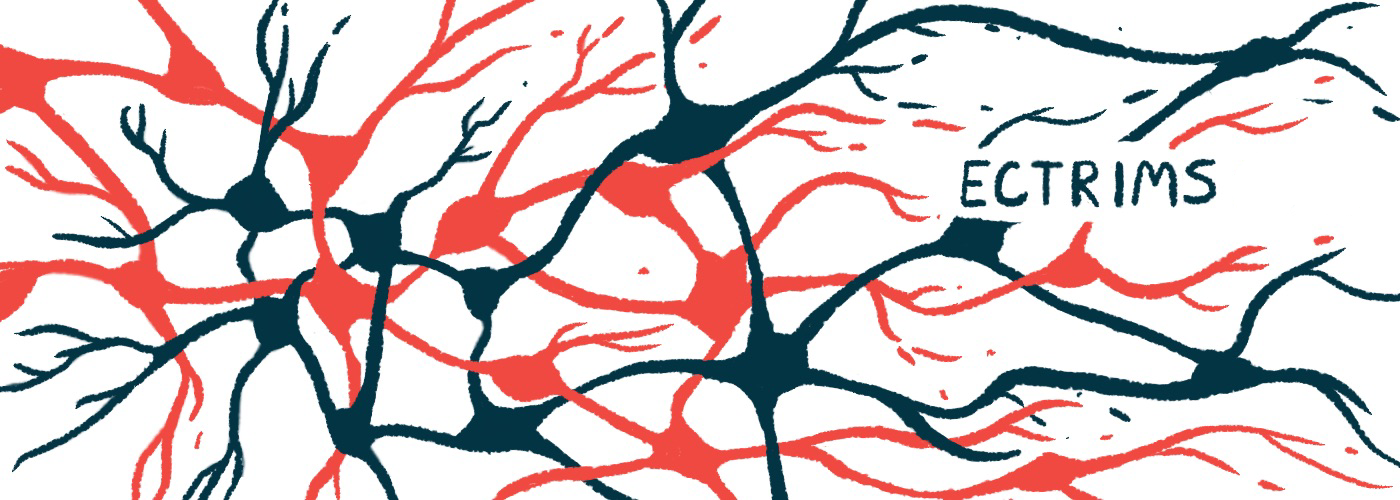#ECTRIMS2022 — Ultomiris Prevents Relapses in Clinical Trial
Potential NMO treatment also helped preserve walking skills, study finds

Ultomiris (ravulizumab) — Alexion Pharmaceuticals’ approved therapy for certain complement-associated disorders — prevents relapses in adults with neuromyelitis optica spectrum disorder (NMOSD) who are positive for antibodies against the aquaporin-4 (AQP4) protein.
The therapy also helped preserve walking skills, with treated patients showing a markedly lower risk of experiencing clinically meaningful worsening in walking relative to an external group of patients given a placebo in another trial.
That’s according to top-line data from an ongoing Phase 3 clinical trial called CHAMPION-NMOSD (NCT04201262).
“By seeking input from patients and coordinating with health authorities, this Phase III trial put the needs of patients first and evaluated measures that mattered most to them,” Gianluca Pirozzi, MD, PhD, Alexion’s senior vice president and head of development and safety, said in a press release.
“We are excited by the significance of the results and the potential of ULTOMIRIS to advance care for the NMOSD community,” Pirozzi added.
The positive findings support Alexion’s submissions to health authorities in the U.S., Europe, and Japan seeking Ultomiris’ approval for NMOSD.
ECTRIMS presentation
CHAMPION-NMOSD results were shared by Sean Pittock, MD, the trial’s principal investigator, in an oral presentation at the 38th Congress of the European Committee for Treatment and Research in Multiple Sclerosis (ECTRIMS), held Oct. 26–28 both virtually and in Amsterdam.
Pittock is the director of Mayo Clinic’s Center for Multiple Sclerosis and Autoimmune Neurology and Neuroimmunology Research Laboratory. The presentation was titled “Efficacy and safety of ravulizumab in adults with anti-aquaporin-4 antibody-positive neuromyelitis optica spectrum disorder: outcomes from the phase 3 CHAMPION-NMOSD trial.”
NMOSD is an autoimmune disease characterized by inflammation in the optic nerve and spinal cord due to abnormal immune attacks against proteins in cells that support the nervous system. These attacks most commonly involve antibodies against the AQP4 water channel protein.
The disease can lead to blindness, walking problems, and paralysis of the lower limbs, and “the risk of NMOSD relapse persists throughout life,” Pittock said, adding that the main therapeutic goal is to prevent these relapses, as they lead to disability.
Currently, three therapies are approved for NMOSD patients with anti-AQP4 antibodies in the U.S.: Alexion’s Soliris (eculizumab), Horizon Therapeutics’ Uplizna (inebilizumab-cdon), and Roche’s Enspryng (satralizumab-mwge).
Ultomiris is Alexion’s successor to Soliris — administered directly into the bloodstream every other week — and allows for a less-frequent eight-week dosing schedule after a loading phase.
Both therapies block C5, a complement system protein involved in the immune and inflammatory reactions that drive nerve damage in NMOSD. The complement system is a set of blood proteins that are part of the immune system’s first line of defense.
However, Ultomiris remains active for longer in the body, requiring less frequent dosing. As such, it is expected to lower the burden and overall healthcare costs for patients.
The second-generation therapy is approved in the U.S., Europe, and Japan for generalized myasthenia gravis, another autoimmune disease, and atypical hemolytic uremic syndrome and paroxysmal nocturnal hemoglobinuria — two rare and serious blood disorders. All three are associated with an overactivation of the complement system.
The CHAMPION trial
Alexion launched the global CHAMPION-NMOSD Phase 3 trial to assess Ultomiris’ safety and effectiveness in NMOSD patients positive for anti-AQP4 antibodies.
A total of 58 adult patients (52 women and six men; mean age 47.4 years) were enrolled, and they received the therapy for up to 2.5 years. Treatment consisted of a weight-based loading dose (2,400–3,000 mg) on day 1, then weight-based maintenance doses (3,000–3,600 mg) on day 15 and once every eight weeks thereafter.
After completing this treatment period, 56 patients chose to enter the trial’s long-term extension period, in which they will continue to receive Ultomiris for up to two years.
For ethical reasons, no participant received a placebo, as three approved therapies were already available. Trial data were compared with those of an external group of 47 patients who received a placebo in a Soliris Phase 3 trial, called PREVENT (NCT01892345), whose data supported Soliris’ approvals for AQP4-associated NMOSD.
Inclusion criteria were similar between CHAMPION-NMOSD and PREVENT, and patients in the external control group had comparable demographic and clinical features to those in the Ultomiris group.
Median follow-up time was about 17 months (range, nearly three months to over two years) for patients treated with Ultomiris and about eight months (range, nearly two weeks to over two years) for the external PREVENT group.
Results showed that the trial met its main goal, with no Ultomiris-treated patients experiencing relapses during follow-up compared with 20 patients experiencing relapses reported in the external placebo group. This reflected a 98.6% drop in the risk of relapse with Ultomiris, which was statistically significant.
The average number of relapses per year was zero with Ultomiris, and all treated patients were free from relapses at 48 weeks (nearly one year) versus 63% of those given a placebo.
In addition, a significantly lower proportion of Ultomiris-treated patients experienced clinically important worsening in their walking skills compared with those in the external placebo group (3.4% vs. 23.4%).
Together, this meant that the trial also met key secondary efficacy goals.
Changes in quality of life and overall disability also favored Ultomiris, but group differences failed to reach statistical significance.
The therapy was generally well-tolerated, with a safety profile consistent with that of Ultomiris and Soliris for other indications, Pittock said.
Rates of adverse events were similar between groups, and a lower proportion of patients on Ultomiris reported serious adverse events relative to the external placebo group (13.8% vs. 55.3%).
The most commonly reported adverse events with Ultomiris included COVID-19 infection (24.1%), headache (24.1%), back pain (12.1%), joint pain (10.3%), and urinary tract infection (10.3%).
“All cases of COVID-19 were nonserious and considered to be unrelated to [Ultomiris],” Pittock said, while headache and back and joint pain are “well-known side effects” of the therapy.
Meningococcal infection, a bacterial illness that affects the brain and spinal cord, was reported in two Ultomiris-treated patients who had been vaccinated against such infection. Both recovered fully with no sequelae, and one continued in the trial.
Still, these cases highlight “the importance of close monitoring, risk evaluation, and mitigation strategies currently in place,” Pittock said. No deaths were reported during the study.
Results from additional subgroup and sensitivity analyses were also presented at the congress in two posters. They showed that Ultomiris remained superior to a placebo when patients were grouped based on age, sex, race/ethnicity, geographic region, and current and prior treatment regimen.
Also, the researchers found no evidence that differences between the Ultomiris and external placebo groups at study start had an impact on the observed treatment effect.
These findings “provide robust evidence for the efficacy and safety of [Ultomiris] in reducing relapse risk in patients with AQP4-positive NMOSD,” Pittock concluded.







